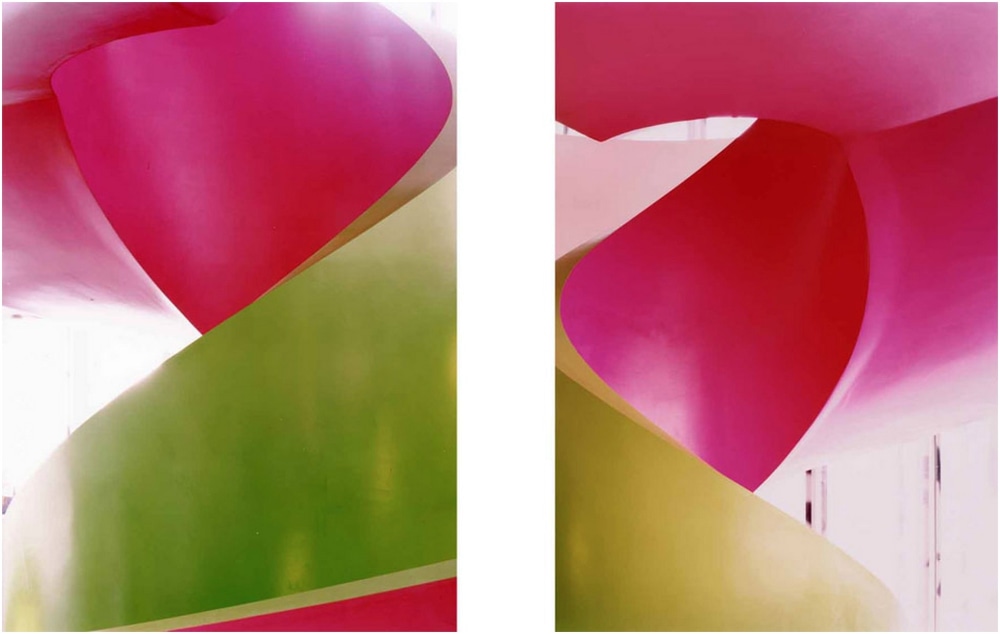
Ola Kolehmainen, Are You talking to Me, 2007.
WOLFSBURG.- The stillness and sense of melancholy peculiar to Northern environments are eloquently expressed in the photographs of the Helsinki School, a group of artists who have taught or studied at the University of Art and Design in Helsinki. The rugged landscape and harsh climate of Finland have created a unique cultural and mental realm that is reflected in the conceptually based visual worlds of this generation of young photographers.
The exhibition of 89 works by six artists invites viewers to embark upon a powerful journey of the senses through this complex artistic terrain: starting out from photographic reflections on space and architecture by Pertti Kekarainen and Ola Kolehmainen, it takes in Pernilla Zetterman’s subtle explorations into family influences and the intimate inner worlds Anni Leppälä has attempted to capture with the aid of photography. The exhibition concludes with a presentation of long-term projects undertaken by Joakim Eskildsen and Tiina Itkonen, which aim to do much more than simply show how people live: Itkonen’s photographs of Eskimos and their villages in north-west Greenland and Eskildsen’s investigation into the culture of the Roma in different countries help us to understand what makes these people the way they are, what moves them and what hopes they have.
In On Top of the Iceberg. New Photography from Finland, the Kunstmuseum Wolfsburg presents a selection of images from the complex cosmos of photographic art created by the Helsinki School, focussing on three thematic areas within the broad spectrum of issues and concepts addressed.
The photographs of Pertti Kekarainen and Ola Kolehmainen deal with the perception of architecture. The exhibition begins, appropriately, with Opening and Passage, two bodies of work from Pertti Kekarainen’s TILA series in which windows and glass doors are the main visual motifs. Kekarainen employs the photographic image as a medium capable of representing spaces in such a way that the viewer gains access to more complex spatial experiences; dynamic situations are created where perspectival and colour spaces interpenetrate across the surface of the image.
Ola Kolehmainen’s interest in the photographic image is also defined by architectural motifs; in his work, a detail of a building is transformed within the image: perspective distortions and reflections create a unique form of representation that makes the building on which it is based recede into the background.
Anni Leppälä and Pernilla Zetterman have made their biographies a central concern of their work: here, the camera is not only used as a tool to record memories and inner feelings as a way of exploring their individual personalities, it is also the primary means by which they engage with their social surroundings. Focussing on the “aspect of lost moments” and a “feeling of letting go”, Anni Leppälä explores the realm between the momentary and the constant. Her work revolves around childhood memories and the museum as a place where things are kept and at the same time brought to life. Swedish artist Pernilla Zetterman focuses entirely on her own world of experience. In the series When, for example, she explores behavioural patterns, obsessions and the question of how identity is shaped by family influences. In Ground Rules, on the other hand, Zetterman analyzes posture, movement and other forms of conditioning involved in playing a sport, thereby revealing the mechanisms that operate automatically when movement or posture is taught, learned or passed on.
The exhibition concludes with works that highlight not only the vulnerability of the individual but also the fragility of the surroundings that enable us to live. Together with his wife, the Swedish writer Cia Rinne, Joakim Eskildsen has been visiting Roma communities in seven different countries. The photographs he took on these journeys provide insight into the lives of this minority social group and show living conditions that range from abject poverty to visible wealth. Above all, however, Eskildsen captures the dignity of these people, irrespective of their country, language or surroundings.
Tiina Itkonen’s most extensive project to date has also involved travelling: since 1995 she has made repeated journeys to Greenland, where she lived with the Eskimos and captured the changing seasons that fundamentally determine their lives. Itkonen’s images go far beyond mere documentation, however; with her balanced perspective and sensitive approach she manages to convey how here – on the edge of the habitable world – man is completely thrown back upon himself and his own resources.